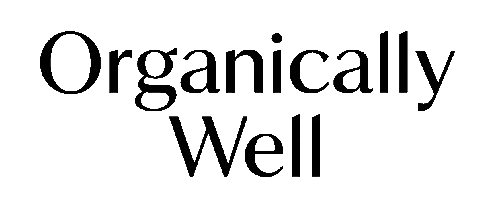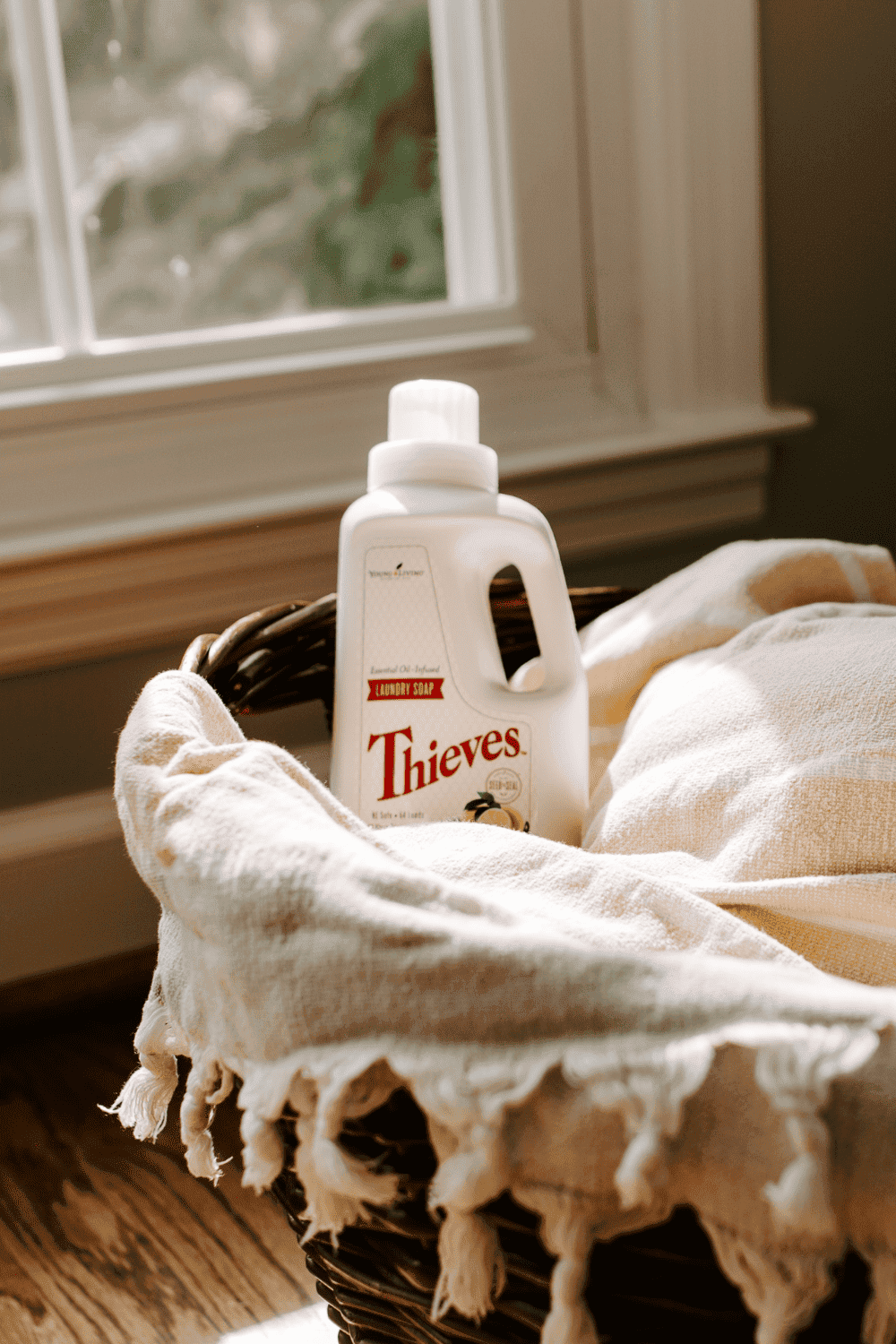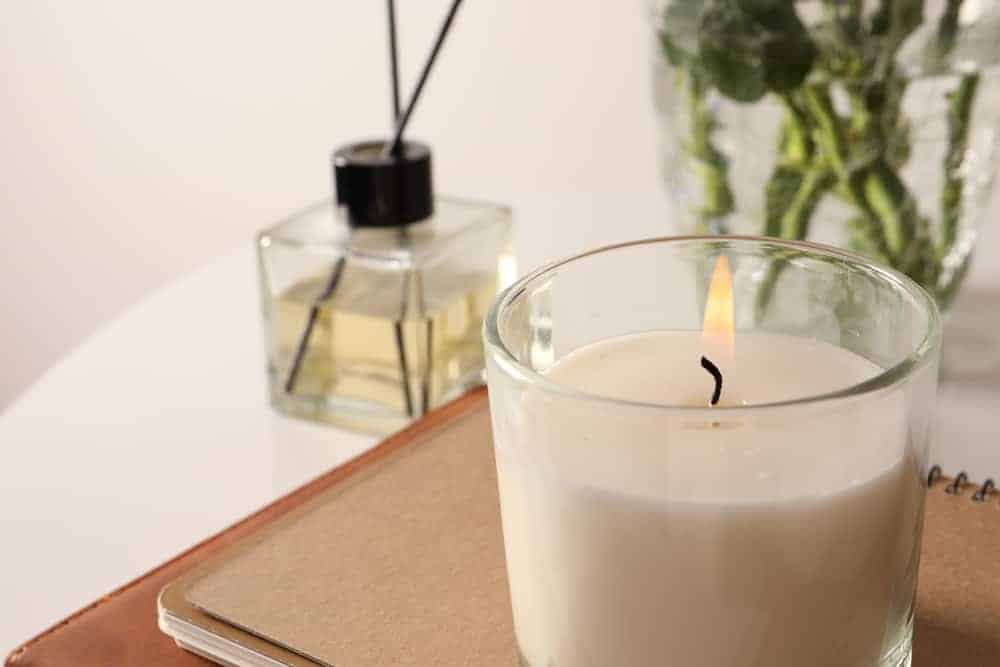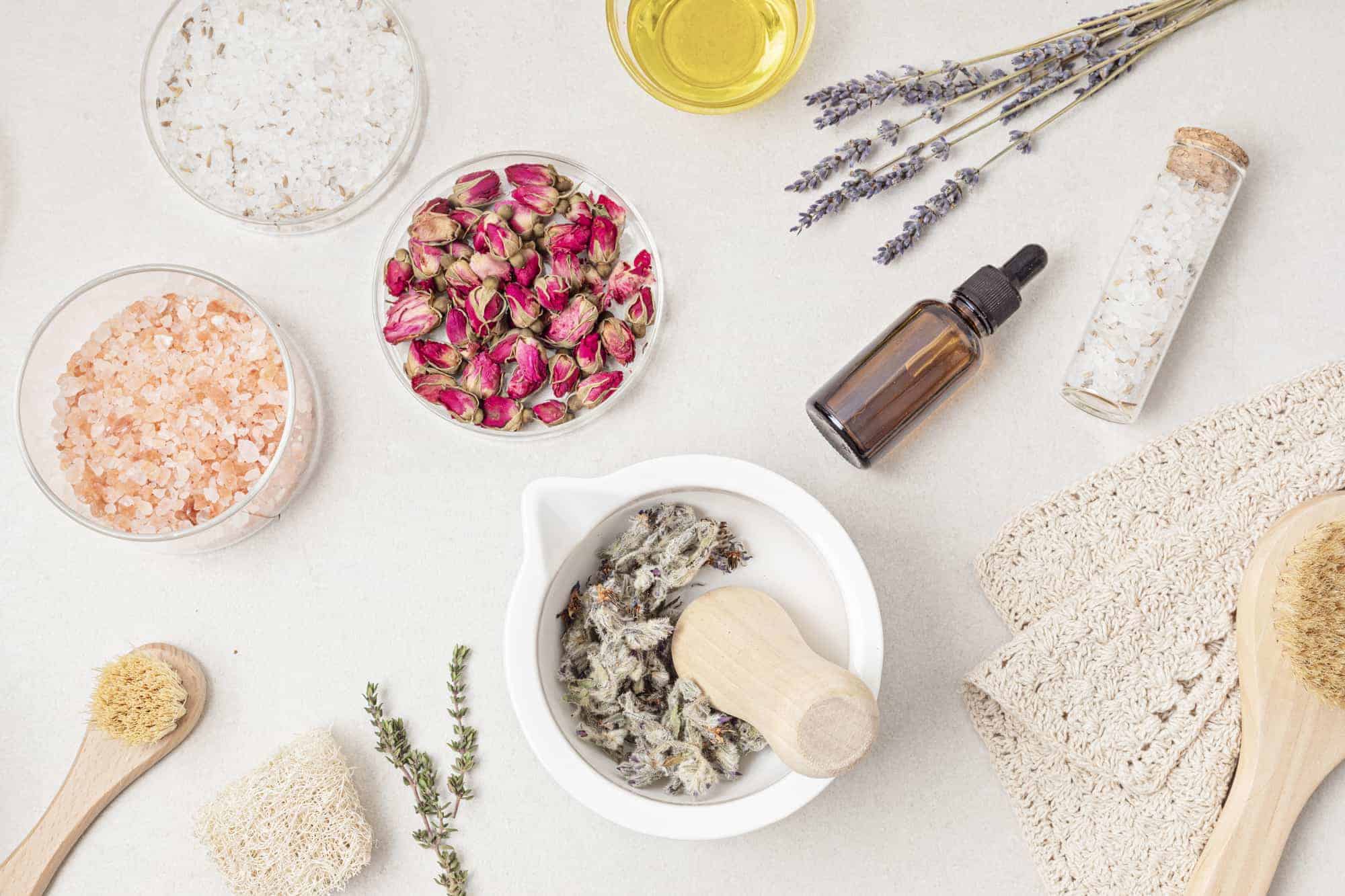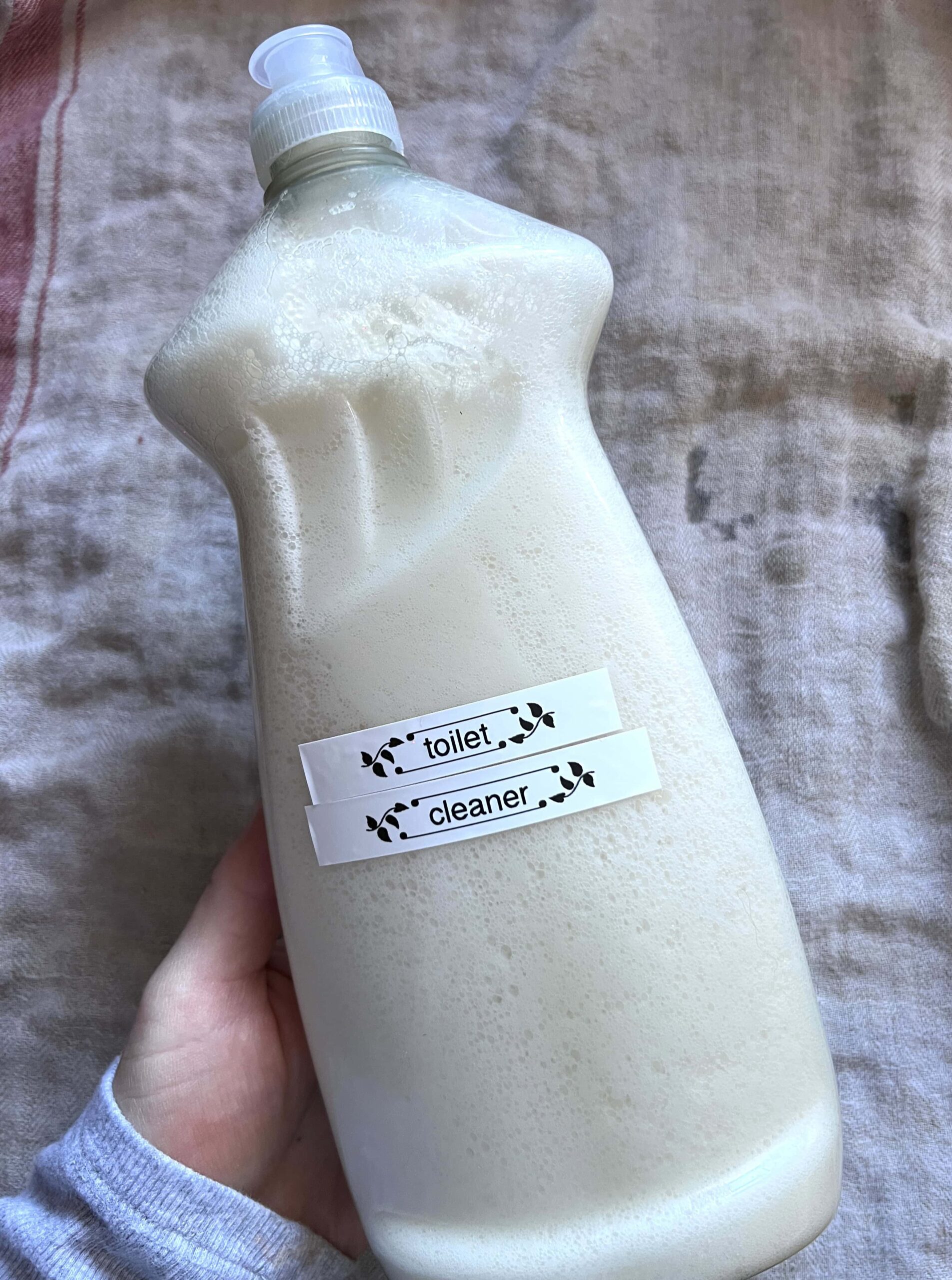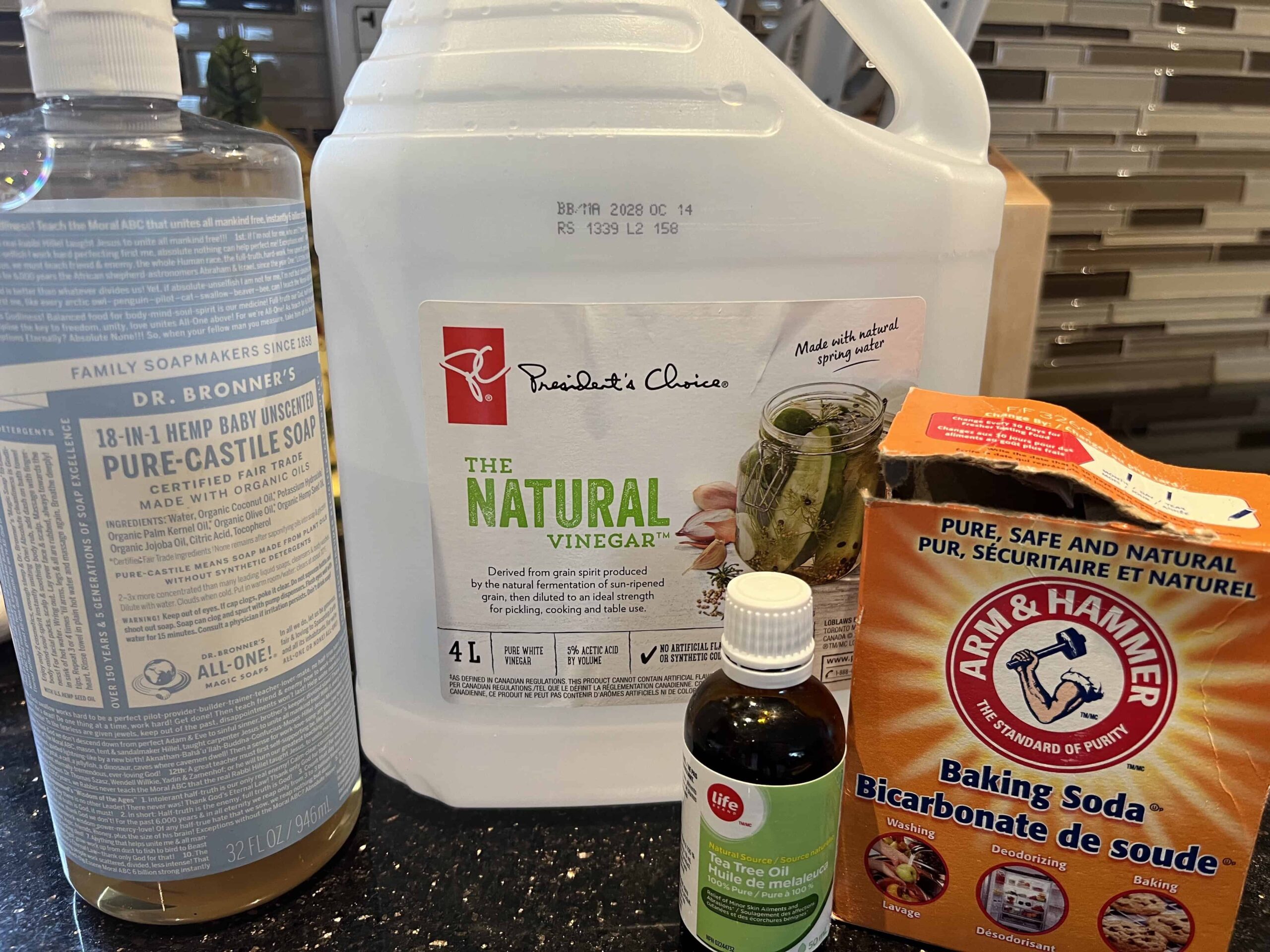21 Simple Ways To Make Your Home Non Toxic
You spend a lot of time in your home, so it’s essential for it to be a safe place! Here are 21 simple ways that you can transform your living space into a non-toxic home to support your health and wellbeing.
In a world filled with chemicals and pollutants, it’s becoming increasingly important to prioritize clean and simple living.
Nowadays, you are bound to find toxic chemicals and ingredients in almost everything you use. From food to cleaning products to even the bed you sleep on. There are toxins all around you.
We spend a lot of time in our homes throughout our lives. Some may spend even more time at home today, with many jobs transitioning to working from home.
You may be wondering why it matters what shampoo you use or why the material of your lunch containers matters, but let me tell you, it all matters.
Did you know your home could be making you sick?
Your environment influences everything from how you feel daily to your energy levels and your immune system’s functioning. It can affect your whole body’s health and wellbeing.
Benefits Of Non Toxic Living
Reducing toxins in your home may benefit your well-being in many ways, such as:
- Your skin may clear up and heal
- You may experience increased energy levels
- You may experience an increase in mood
- You may get sick less often
- You may feel better and happier
So, if you’re looking for ways to help you create a non toxic home this list gives you simple ideas for where to start.
If you start to feel overwhelmed, please remember that you do not have to and will not be an expert in this right away, and you do not need to do everything at once. Take it step by step, and be proud of every step because you’re creating a non toxic home for you and your family!
Some examples of simple ways to create a non toxic home that will be discussed below are:
- Getting rid of commercial candles
- Using glass food storage containers
- Swapping out your non-stick cookware
- Drinking filtered water
- Buying natural bed linen
- Drinking from glass
- Switching out your shower curtain
21 Ways To Make A Non Toxic Home
1. Stop Buying Scented Candles
Candles are hugely popular, especially with all of the delicious scents that companies are now able to create.
Pumpkin spice anyone?
But have you ever thought about what these candles are made out of? Probably not.
Truth is, a lot of us don’t dig so deep into everything we buy.
But, these scented candles are one of the most toxic items you can have in your home. When you light these candles ( or even leave them unlit), they release toxic gases called ‘Volatile Organic Compounds’ (VOCs).
Some of the most commonly known VOCs include formaldehyde, benzene, and toluene.
According to the American Lung Association (2023), VOCs can harm your health in many ways. Inhalation of these gases can irritate your eyes, nose and throat, cause breathing issues, and damage the central nervous system and other organs. Some VOCs have also been linked to cancers.
So, obviously, you don’t want to have these compounds floating around in your home, especially in a closed space.
Ditch the scented candles and get one step closer to having a non toxic home.
What’s a safer, non toxic swap? I’m glad you asked!
If you love candles for a cozy atmosphere or just want to decorate your home, opt for buying candles made from beeswax like these 100% pure beeswax candles from Amazon.
Beeswax candles are safe, natural and non-toxic. You don’t have to worry about your candles emitting toxic gases ever again. Plus, beeswax candles also have a lovely, naturally sweet, honey smell when they burn, so that’s also a win 🙂
2. Ditch The Infusers & Fragrance Wall Plugs
Like scented candles, these fragrance products release toxic chemicals into your home. On top of carcinogenic VOCs, these products, such as wood diffusers and plug-in wall diffusers, also release chemicals like phthalates.
Phthalates are known hormone disrupters and are associated with increasing risk for several diseases, including cancer.
Strong artificial fragrances are irritating to your whole body and negatively impact your concentration and your sleep quality.
Skip these air pollutants and notice if you start to feel any different.
3. Eliminate Plastic
Plastic, plastic, and more plastic.
It seems like everything these days is either made of plastic or has plastic traces in it from processing.
It’s virtually impossible to eliminate all plastic from your life, but the best you can do for yourself and your family is to make some essential swaps.
Food Storage Containers
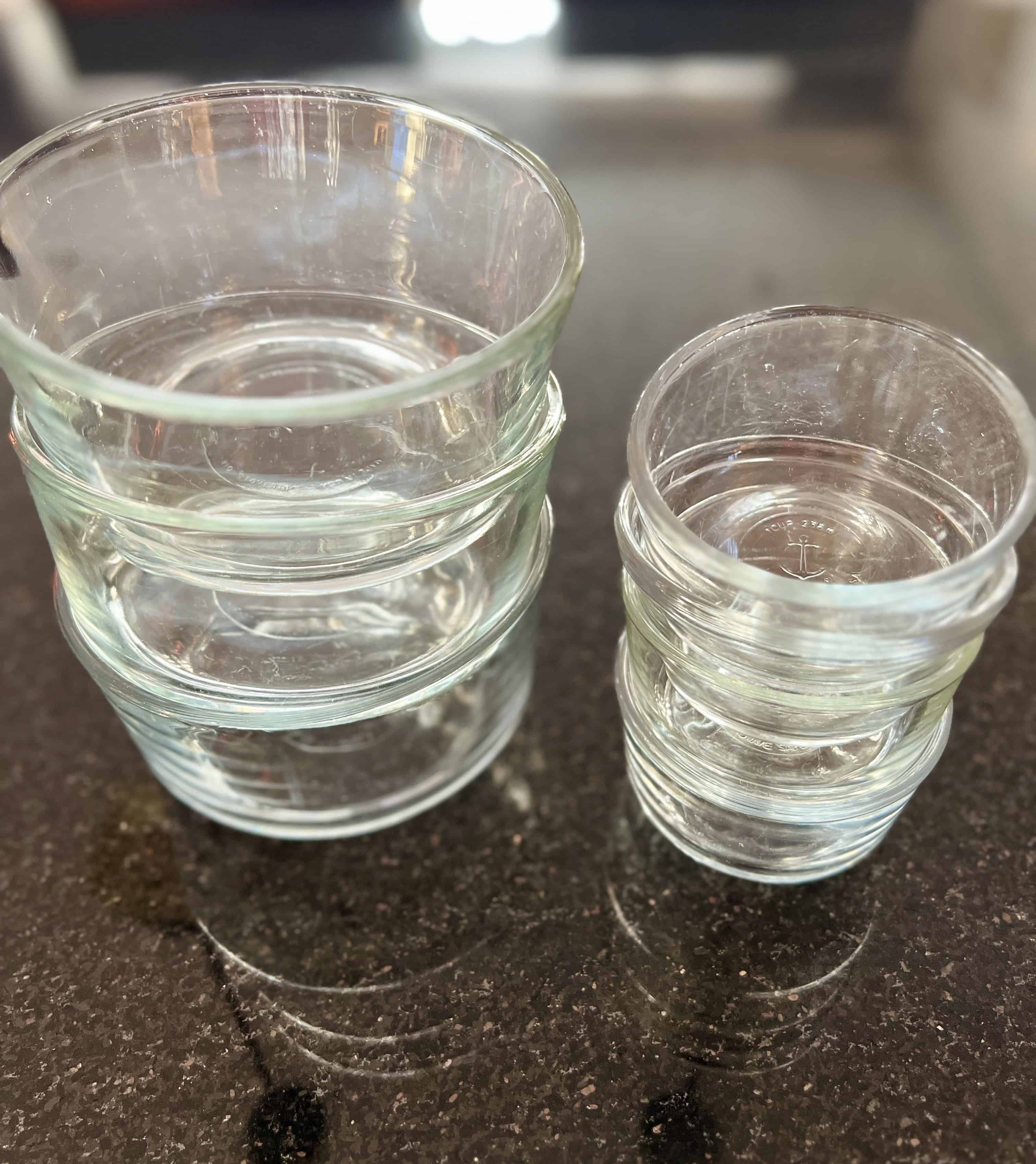
If you pack lunches for work and school or use containers to store leftovers in the fridge, I strongly encourage you to get rid of any plastic containers you may own. Why?
Anytime you store hot food in these containers or warm up leftovers in the microwave, tiny microplastic particles leach into your food. Which you then end up consuming.
Studies have tested this and found that by repeatedly heating plastic containers, microplastics continuously leached into food it was in contact with. The food then becomes contaminated with plastic, which you end up eating.
To do your best to reduce plastic in your home start with swapping for glass food storage containers. I use the Anchor Glass Containers and Pyrex Wood Lid Containers at home. If you need to warm your food in a microwave, remove the lid when heating.
Clingwrap
Also, to reduce plastics in your home, consider switching from clingwrap and storing your leftovers in a natural beeswax wrap instead.
Tea Bags
I bet you never thought your tea bag was toxic. But, sadly, many of them are especially the individually packaged convenient little sachets.
This is especially important because your tea steeps at a very high temperature; thus, more microplastics can leach into your drink.
These new ‘silken’ tea bags are made of polyethylene terephthalate and nylon (used in bags and clothes). A study tested dozens of tea bags from different brands. They were shocked to find millions of micro and nanoplastic particles floating around in the tea after steeping.
The best way to protect yourself against tea bag microplastics is to buy loose tea or ensure your tea bags are made of paper material.
These steps are your best option for reducing plastic consumption in food packaging.
4. Drink From Glass
Along with microplastics leaching into your food, microplastics can also leach into your beverages.
If you regularly drink water and other beverages from a plastic bottle (including reusable bottles), drink from a glass instead.
Instead of buying packages of plastic water bottles, opt for drinking water (filtered or spring) from a glass. If you need a bottle for on-the-go, stainless steel is safe for most beverages. Some studies have found that carbonated drinks can erode the steel material, but water and most other cold drinks are okay.
Reusable glass bottles such as this BPA-Free Glass Bottle or this Glass Bottle With Bamboo Lid are safe, non toxic water bottles.
5. Stop Using Teflon Cookware
Do you have any non-stick cookware? If yes, please do yourself a huge favour and get rid of it.
Teflon, known as polytetrafluoroethylene, is the ‘non-stick’ coating that is made from a mixture of chemicals called PFAs, such as perfluoroalkyl and polyfluroalkyl substances. These chemicals have been studied for decades, and exposure to PFAs has been linked to cancers, hormone disruption, reproductive issues and other health conditions.
When you heat these pans to cook, the Teflon coating wears down, releasing chemicals into your food and the air.
The issue with these chemicals is that they are accumulative and do not biodegrade, thus making them toxic to humans and animals alike. Toxicologists have found PFAs accumulated in major organs such as the liver, gall bladder and thyroid gland.
Don’t worry if you have any of these non-stick products at home; you’re taking a conscious step to remove those toxins from your home, and for that, you should be proud. It’s never too late to make changes; what’s important is that you are!
Check out these non-toxic cookware brands for some of the best options on the market.
Some safe, non-toxic cookware options include:
Pans of 100% stainless steel are safe to cook on, even at high temperatures. Some reports say that when cooking acidic foods such as tomatoes, some stainless steel pans may release trace amounts of chromium and nickel. For the majority of people, this is safe, but for those who have a sensitivity or allergy, they should be mindful.
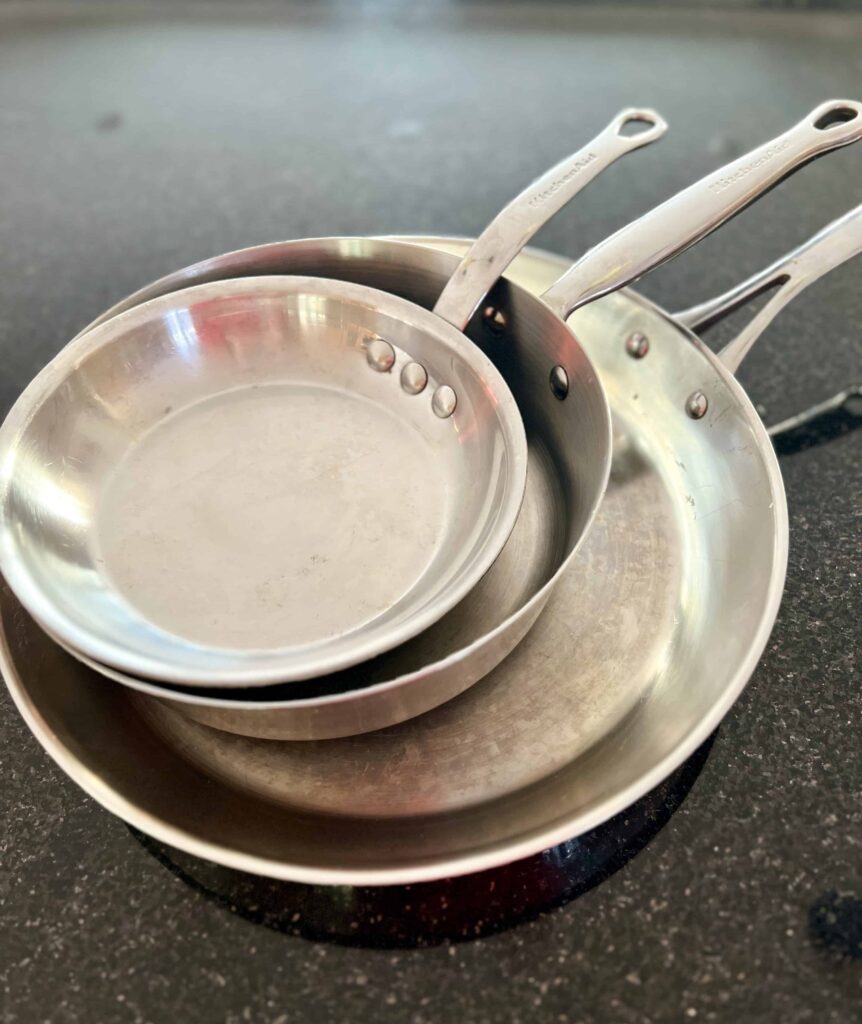
Made of iron, steel and a mix of trace elements such as sulfur, manganese, and phosphorus. There is no non-stick coating, making it a safe, non-toxic cookware option.
A study comparing element concentrations in sea bass before and after cooking on Teflon, aluminum, steel, ceramic and cast iron found that cooking on steel and cast iron actually increased the concentrations of calcium, iron, phosphorus, copper and manganese.
Cast iron cookware is even being used as an intervention for reducing iron deficiency anemia in children in developing countries.
6. Swap Your Hygiene Products
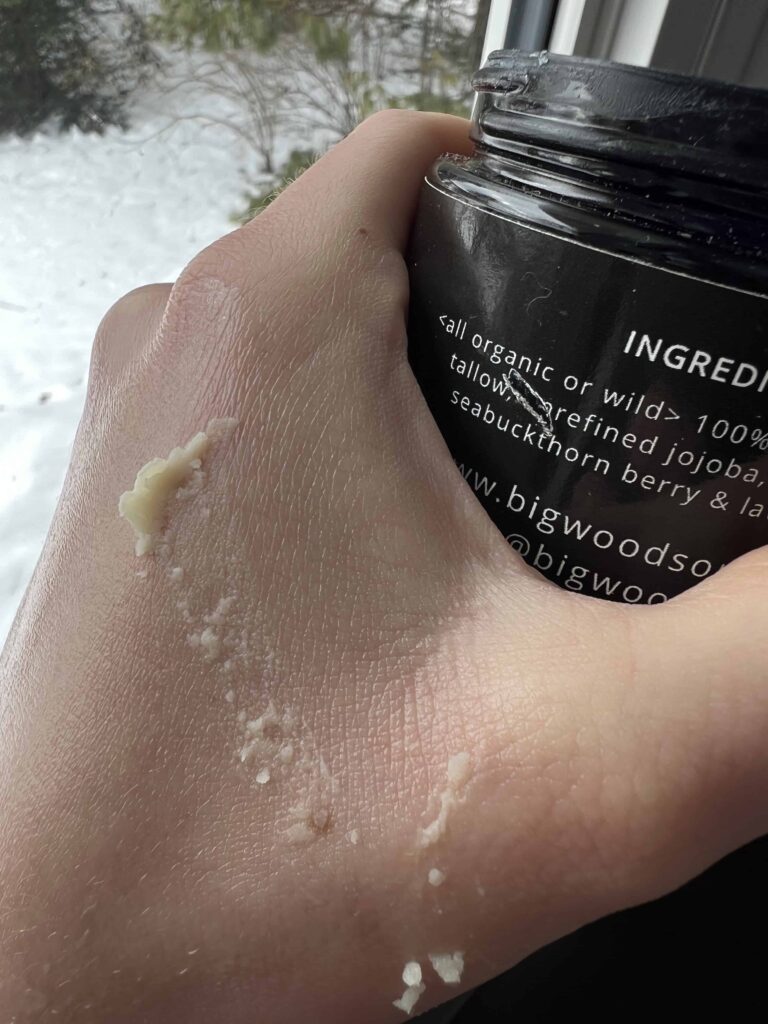
Shampoo, body wash, lotions and face cleansers… every single personal hygiene product you use has the potential to harbour toxic chemicals.
I know it can feel overwhelming, but don’t freak out. Just tackle one item at a time, and you can slowly transition to non-toxic products.
A study by the American Journal of Public Health calculated that skin absorption averages roughly 64%. This is incredibly important in selecting personal care products because your skin will, to some extent, absorb the product you use into your bloodstream.
A good place to start is to avoid these main toxic ingredients

Photo: Meghan Telpner
My Favourite Non-Toxic Swaps:
- Fancy Farm Skincare Goat Milk Soap & Tallow Face Cream
- Three Ships Beauty Cleanser
- Carina Organics Body Wash & Shampoo
7. Use Clean Makeup
The makeup industry is huge, and sadly, the regulation of product formulas is seriously lacking. Some of the most popular brands use many toxic ingredients in their formulas. Since toxic compounds can easily be absorbed through the skin and into the bloodstream, you really need to be aware of what you’re using.
Your skin is your largest organ; take care of it!
According to EWG, toxic chemicals that should be banned include:
- Formaldehyde, a known carcinogen
- Paraformaldehyde, a product of formaldehyde
- Methylene Glycol, a type of formaldehyde
- Mercury is toxic to the nervous, digestive, and immune systems, lungs, kidneys, skin and eyes
- Isobutyl and Isopropyl Parabens,
- Quarternium 15, a formaldehyde-releasing preservative
- M- and O- Phenylenediamine, cause skin irritation, allergy, genetic defects, cancer, liver and kidney disease
- Dibutyl and Diethylhexyl Phthalates, endocrine disrupters and reproductive toxicants
- Per – and polyfluoroalkyl substances, known as PFAs, are linked to thyroid disease, cancers, organ damage, reproductive dysregulation
On top of this list of toxic chemicals, heavy metals such as nickel, mercury, lead and cadmium are often included too.
So, do an inventory check of your makeup and get rid of any that contain toxic chemicals and swap for safe products from these non-toxic make up brands.
8. Use Safe Cleaning Products (or make your own!)
Commercial household cleaning products contain numerous toxic chemicals linked to serious health concerns.
From respiratory issues like asthma to allergies, cancers, skin irritation and burns, and reproductive and developmental toxicity. Home cleaning products are seriously toxic. Read this EWG article to see what toxic chemicals could be hiding in your cleaning products.
The great thing is that dozens of new companies offer clean, safe, non toxic cleaning products. Some awesome natural cleaning products brands include:
If you’re short on time and need convenient, ready-to-go, non-toxic cleaning products, here’s a list of the ten best non-toxic cleaning brands. They’re transparent and offer an ingredient page that tells you exactly what’s in their products and what it is.
Homemade Non-Toxic Cleaning Products
If you have the time, you can also make homemade non-toxic cleaning products. This is great because you know exactly what ingredients are in your cleaning products, so you don’t have to worry.
Try these three simple homemade cleaner recipes:
- Simple DIY Orange Vinegar Cleaner
- Homemade Foaming Hand Soap Recipe With Grapefruit And Tea Tree
- 8 Easy DIY Natural Cleaning Recipes To Clean Your Whole House
- DIY Non-Toxic Dish Soap Recipe
9. Switch Out Your Shower Curtains
Do you have plastic shower curtains or shower curtain liners in your home?
Many shower curtains and liners are made with polyvinyl chloride (PVC). This is a thermoplastic material that releases volatile organic compounds (VOCs). These toxic chemicals may cause respiratory irritation, harm to the central nervous system, liver and kidneys, and nausea and headaches.
In 2008, the Center for Health, Environment and Justice found that new shower curtains released over 108 VOCs into the space over 28 days.
But don’t worry! PVC-free shower curtains and liners do exist, and more brands are switching over to offer more options. You only need to conduct a quick online search for ‘PVC-free’ shower curtains.
This way, you can keep your bathroom floor dry and have a non-toxic home.
10. Is Your Paint Safe?
Repainting a room can spruce up your whole living space. But don’t sacrifice your health over a new swatch of colour!
Paint can be toxic as it releases volatile organic compounds (VOCs) into your space, polluting your air quality at home. Long-term exposure to VOCs can cause skin, eye, nose and throat irritation, breathing issues and asthma, and may even harm the nervous system, liver and kidneys.
If you live in an older space, there is also the potential for lead paint to be used on your walls. Lead is highly toxic to the human body.
Non toxic paint for walls does exist and is becoming increasingly popular for obvious reasons. Some brands that are worth checking out:
- Healthier Homes’ Water-Based Zero-VOC Paint
- Clare’s Sustainable Paints For The Home
- Green Planet Paints Zero VOC Water-Based Paint
- The Real Milk Paint Company’s Natural Paint
- Ecos VOC-Free Paint
You don’t want to be breathing in invisible chemicals daily, so make sure your home has non toxic paint on the walls.
11. Opt For Natural Bed Linen
It’s estimated that we spend about one-third of our lives in bed. Wouldn’t you want to be sure you spend this time in a safe, non-toxic space?
Few people know the potential for toxins hiding in their bed linen. Yup, that means your bed sheets, duvets, comforters, mattress covers, pillows… all of it. These toxins (like formaldehyde!) may cause harm to your health and well-being and negatively affect your sleep quality.
Sleep is the body’s time to restore, detox and heal. When you sleep covered and surrounded by toxins in your bed linen and artificial fragrances from your laundry detergent, you are actively preventing your body from getting proper rest and restoration. The body can’t restore if it’s constantly sensing and fighting with toxins, even during sleep.
Now, if you frequently experience trouble sleeping, wake up during the night, or wake up feeling exhausted, your toxic bed linens might be the culprit.
How To Choose Natural, Non Toxic Bed Linen
So, how do you know what non-toxic bedding to buy?
To find natural, non toxic and organic bedding, follow these easy tips:
- Opt for 100% natural fibres such as cotton, linen, silk, or wool. These are all breathable fabrics, non toxic, and, and even possess antibacterial properties.
- Avoid synthetic materials (ex. satin). These fibres are chemically treated and non-breathable.
- Avoid blended fibres. Even though it says cotton, ensure it’s not mixed with another synthetic fibre. Companies do this to make products cheaper and regularly mix in various synthetic fibres, too.
- Avoid anything labelled ‘wrinkle-free’, ‘shrinkage-free’ or ‘anti-static’. These claims immediately mean the linen was chemically treated, usually with formaldehyde (a carcinogen).
12. Buy Non Toxic Laundry Detergent
Conventional laundry detergents are a concoction of toxic chemicals. All of which can harm your health and well-being. Cleaning products are largely unregulated, so there are no laws, restrictions or controls on what ingredients are used.
Many chemicals used in laundry detergents, laundry sheets and fabric softeners have been associated with numerous ill-health effects such as endocrine disruption, respiratory problems, cancers, developmental issues, skin conditions, nervous system disorders, burns, obesity, vomiting and so much more…
Talk about scary stuff, right?
Some common toxic ingredients to watch for in toxic laundry products include:
- Artificial fragrance
- Formaldehyde
- Benzyl Acetate
- Chloroform
- Dichlorobenzene
- Benzyl alcohol
- Alpha Terpineol
- Pentane
- Camphor
- Linalool
Non Toxic Laundry Detergent
Thankfully, there are awesome companies out there that sell safe, non toxic laundry detergents that will support your health and well-being.
Be careful when shopping for non-toxic laundry detergent because many companies label themselves as ‘green’ or ‘natural’ and actually use some of those common toxic chemicals in their formulas (it’s unregulated!).
Here’s an easy guide for Toxic Ingredients To Avoid In Laundry Detergent. Find out which toxic ingredients you should avoid and how to tell what different certifications mean so you can find the best natural laundry detergent.
So, remember to do some good research and make sure the company is transparent in their formulas.
Out of all of the non-toxic laundry detergent brands I’ve tried and tested, these are the 5 Best Non Toxic Laundry Brands that actually work!
If you’re having a baby or have small kids, keeping them safe from toxic laundry detergents is important, too! Here are the Best Non-Toxic Laundry Detergent For Babies (2024 Guide).
13. Choose A Green Mattress
Years ago, mattresses were made from natural materials such as feathers, wool, and horsehair. With the advent of a cheaper and faster way of mass-producing mattresses also came the invention of using synthetic materials like polyurethane foam.
To make polyurethane, methyloxirane and toluene diisocyanate (TDI) are used. Both of these chemicals are recognized as carcinogens.
You don’t want to be breathing in VOCs every night as you sleep! Opt for a safe, non-toxic mattress like Avocado Green Mattress so your body can rest and heal while you sleep.
14. Use A Water Filter
Water today is incredibly polluted with all sorts of toxic chemicals. This is especially true if you live in a larger city. Because water is recycled, traces of medications and hormones, such as birth control pills, are in your tap water.
Additionally, with factories and residential pollution, water is largely contaminated with heavy metals such as mercury, lead, and arsenic. Filtration plants also add substantial amounts of chlorine for disinfection, which you end up drinking, along with other disinfection byproducts.
You can buy water filters that attach to your tap directly to ensure that your drinking water is safe and free of toxic chemicals.
15. Choose Natural Materials For Clothing
Just like with your bed linen, you want to ensure that the clothing you wear daily is non-toxic and safe for your health.
Your skin is your largest organ that acts as a protective barrier between your inner and external environments. Your clothing covers about 85% of your skin, so it’s extremely important to ensure you don’t expose it to toxins daily.
Many toxic chemicals and hazardous compounds are added when converting fibres into clothing. Although many of these chemicals are supposedly rinsed out, traces remain in the finished product and can be released when worn by a consumer.
Toxic chemicals used in the processing of clothing include:
- Flame retardants
- Chemicals for oil- and water-repellency
- Trace elements such as dyes, pigments and metals (chromium, lead, copper, cobalt)
- Aromatic amines (textile dyes), carcinogenic and genotoxic properties, toxicological effects, allergenic
- Quinoline, bisphenols (BPAs), benzothiazoles (BTHs), benzotriazoles (BTRs), skin irritants and probable carcinogens
- Formaldehyde, a ‘complete carcinogen’, meaning it affects tumour cells at all stages of growth
- Phthalates, endocrine disruptors
Choose Natural Fibres
For non-toxic clothing that will make you feel good and support your health and wellbeing long-term, choose natural fabrics such as 100% cotton, linen, wool and silk.
Of course, it’s difficult to have all your clothing be 100% non-toxic. Just do your best! For example, if you go for a run and need your athletic wear, just change into something more natural once you get home.
16. Add Plants To Your Space

Did you know that plants can clean your air at home?!
Through biofiltration or phytoremediation, plants remove chemicals from your air, including gases like Volatile Organic Compounds (VOCs) such as benzene and toluene.
A study found that a Bromeliad plant could effectively filter 6 out of 8 studied VOCs!
It’s time to go green and grab some plants for your home space.
These little guys constantly work to filter and clean your air so that you can have a non toxic home.
17. Ditch Aerosol Sprays
Any product that promises to ‘freshen air’ or ‘eliminate odours’ is immediately a no.
When you use room sprays and air fresheners at home, you are actively polluting your home air quality by introducing toxic volatile organic compounds (VOCs) such as formaldehyde, benzene, xylene, toluene, ethyl benzene, and acetaldehyde.
Inhalation of VOCs can induce migraine headaches, nausea, breathing issues, asthma, allergies and neurological problems.
This goes for all aerosol sprays, including deodorant, cleaning products, etc.
Ditch all aerosol sprays for a healthy, non-toxic home.
18. Dry Your Clothes In The Sun
Drying your clothes in the sun has many health benefits.
Boost your low-tox lifestyle and dry your clothes outside in the sun. The sun is a natural disinfectant! The ultraviolet light (UV) sanitizes and disinfects your clothing, killing any bacteria or pathogens that may be present.
It’s a free, non-toxic method for ultra-clean clothing.
19. Invest In An Air Filter
If your budget allows, invest in an air filter.
Air filters are becoming more and more popular, and for good reason. Whether you live in a busy city, have animals, or just jump on the low-tox lifestyle train, an air filter is a good investment.
Air filters and purifiers clean the air inside your home for improved air quality. Air filters target pet dander, dust, road dust, smoke, and some VOCs.
An air filter is not a ‘one and done’ solution to a non toxic home. It works in synergy with your other non-toxic lifestyle habits. For example, if you use artificially scented candles that release VOCs, sure, an air filter may be able to neutralize your air space, but you’re kind of working against yourself here.
Creating a non-toxic home takes a holistic approach!
Also, you do not need an air filter to have a healthy home! Keep reading for more budget-friendly air filtration options.
20. Reduce Blue Light
Blue light is everywhere nowadays. Phones, TVs, work, schools, you name it.
With much of our time now spent on some kind of blue-light emitting device, you must be mindful of your usage. Long-term blue light exposure may damage retinal cells, causing vision impairments and negatively affecting your sleep.
Excessive blue light consumption is toxic to various cells, organs and processes (like sleep!) in your body, so do your best to create a plan for reducing your blue light exposure and digital consumption.
21. Watch For Mold (& Clean Regularly)
Mold illness is becoming more and more prevalent in society. Perhaps it’s because we’re spending more time indoors than previous generations.
Mold can hide throughout your home and threaten your health and well-being. Mold exposure can cause allergies, respiratory problems, gastrointestinal issues, and immune dysfunction.
You can become exposed to mold toxins through food or even through inhalation of microspores in the air.
For a non toxic home, create and stick to a regular cleaning schedule to minimize your risk of exposure to mold toxins.
What’s The Best Way To Create A Non Toxic Home?
There’s no one best way to create a non toxic home. Making your living space safe and healthy takes a holistic approach in all areas of your life. From the shampoo you use to what you cook on to what mattress you sleep on, it all matters!
The list above gives you 21 simple ideas of where to start when you want to create a non toxic home.
I Feel Really Overwhelmed. It Seems Like Everything Is Toxic, Where Do I Start?
Okay, I’ve been right where you are, too (and I’m still working on it after years!)
I was so overwhelmed when I started my non-toxic lifestyle journey. It felt like everywhere I looked in my home, I found another toxic thing.
Just start. Pick one thing a month and work on making a healthier swap. Start gradually, focusing on just one thing at a time, and you’ll feel less overwhelmed.
Also remember that it’s almost impossible to rid your environment of all toxins – and that’s okay! Just work toward reducing your toxic load where you can.
Be proud of yourself for making the conscious decision to make changes to start a non-toxic lifestyle!!
How do you practice non-toxic living in your home?
Resources
Human health risks due to exposure to inorganic and organic chemicals from textiles: A review
Selecting the right houseplant could improve indoor air
The complete guide to toxic chemicals in mattresses
